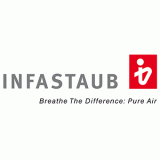
In the course of EAC conformity assessment in some cases sample assessments may be carried out. This does not hold for every scheme of conformity assessment, but it is necessary for both the EAC certification and the EAC declaration.
Examinations are carried out by an accredited laboratory, which is registered in the unified register of the certification bodies and laboratory of the customs union.
Do the samples have to be marked with an EAC sign?
For samples that are sent for testing in the context of EAC certification, no proof of conformity is required. The samples also do not need to be marked with the EAC sign. However, it must be noted that the samples are subject to a customs declaration in accordance with the generally established procedure.
This means that the samples are not subject to conformity assessment, but they must be properly declared at customs.
According to Article 53 of the Treaty on the Eurasian Economic Union of 29.05.2014, products placed on the market within the EAEU must be safe. The rules and procedures for ensuring product safety are set out in the technical regulations of the EAEU (Customs Union), which contain mandatory requirements for products.
Legal framework
The testing shall be performed according to specified regulations. These rules are determined in regulations, test methods, programs and other technical regulations of the customs union.
There are several directives regarding the selection and import of samples:
- Explanations of the Federal Customs Office of Russia and the accreditation body Rosstandart “On the procedure for customs clearance in connection with the import of commodities as samples and samples with the scope of conducting tests” December 29th, 2017
- Decision of the committee of the EAEU No. 294 of December 25th, 2012 “On regulation on importation into the customs union territory of products (goods) for which mandatory requirements are established within the customs union.
- GOST 21814-2012 Conformity assessment. General sampling rules for products testing during attestation assessment” GOST determines by whom, where and how the samples are taken.
There are 5 important questions:
- Why is it important to send the samples correctly?
- How are the samples chosen?
- Which and how many samples are required?
- How and what is tested?
- What is the best way to ship samples?
Why is it so important to ship the samples correctly?
The samples, that shall be submitted to Russia or the Customs union within the framework of conformity assessment underlie an import declaration.
A copy of the contract with the accredited certification body or the laboratory as well as a letter, which confirms that the samples are required in the respective quantity (weight and volume) for the tests of the EAC certification shall be presented to the customs authority.
The contract between the applicant and the certification body may be missing, if the proof of conformity of the applicant is registered online on the official website of the Federal accreditation service.
There are two possibilities for customs declaration:
- with a separate import declaration
- with a written application. In the application the property “sample for the scope of conformity proof” shall be filled in as description of the commodity. Additionally a proforma invoice, which shows the quantity (weight and volume) of the imported samples, as well as a copy of the contract with the accredited certification body and/or a letter of the laboratory shall be submitted. This holds only for shipment by post.
For the conformity assessment procedure, the certification body requires a customs declaration for the imported samples. In addition, according to the recommendations of the Federal Customs Service dated 15.03.2019, the Russian customs authorities are entitled not only to verify the existence of an EAC certificate or an EAC declaration, but also to examine the evidence of conformity that serves as the basis for the issuance of EAC certificates and EAC declarations.
Therefore it is important to organize the import correctly.
Sampling
For the EAC certification the sampling is carried out by the certification body.
For the EAC declaration the samples are chosen by the manufacturer.
The sampling is conducted:
- in case of a serial delivery - in the warehouse of the manufacturer
- for a batch delivery - at the place, where the batch is located (in the finished goods warehouse of the manufacturer, interim storage, customs warehouse)
- for single products - at the place, where the product is located (at the production site of the manufacturer, at the installation site of the product, in an interim storage)
Which samples and how many of them are required?
The certification body examines the product and subsequently communicates its decision on the certification request to the applicant indicating also the required quantity of samples. The quantity may differ depending on the product, the technical regulation and the costs of the product (in many cases the sample gets destroyed in the course of the tests). From experience we can say that the test laboratory requires from 4 to 5 samples for the certification within the framework of the technical regulation TR CU 07/2011 On safety of light industry products. For products such as furniture according to TR CU 025/2012 On safety of furniture one sample is sufficient. The same holds for electrical equipment according to TR CU 004/2011 On safety of low voltage equipment and for machinery as stated in TR CU 010/2011 On safety of machinery and equipment.
Die Zertifizierungsstelle kann im Einvernehmen mit dem Antragsteller zusätzlich Produktmuster bei sich oder im Labor lagern, um bei aufkommenden Fragen oder Beschwerden die Qualität und Konformität des Produkts zu kontrollieren.
The following properties are crucial for the selection of samples:
- uniformity of the delivery lot
- representative nature of the composition
- representativeness of the quantity
- compatibility of the samples with the main features of the product
The scope of the sampling is to proof the representativeness of the chosen sample for the whole serial production and the validity of the test results for other deliveries. The selected samples shall be identical in design, composition and manufacturing technology to the products, which are intended to be sold to the end consumer.
How and what is tested?
The tests are carried out by experts in accredited laboratories using approved devices. Therefore specific programs and testing procedures are used, which may be developed by the laboratory or the manufacturer and approved by the certification body. Technical documentations are likewise checked and analyzed.
There are two types of tests:
- The sample is tested but not destroyed: this holds for expensive and unique products
- the sample is destroyed and disposed by the laboratory after the testing.
The laboratory issues a test report, which includes the results. The test report is an official document and provides the basis for issuing the EAC certification or the EAC declaration. If the product does not pass the tests, a report with negative results will be prepared.
The test report shall contain the following details:
- Basis of the tests
- Details on the manufacturer of the commodities
- Description of the samples7li>
- Testing methods
- Date
- Test results
Both the certification body and the applicant receive a copy of the report. The laboratory is obligated to keep the copy for at least 3 years.
All information received within the test procedure is confidential. The parties involved are responsible for the safety of the information.
The decision of the certification body whether to issue or to refuse to issue the certificate/declaration is based on the test report.
Therefore the test report is the essential document within the issuing the an EAC certificate or declaration.
What is the best way to ship the samples?
It is easiest to send the samples as a postal item. The following requirements must be met:
- The total value of the shipment, which covers the value of the goods including delivery, should not exceed the value of 200€.
- The weight of the packages in which the samples are sent should not exceed 31 kg.
In this case, a simplified customs declaration can be used. Normally, the customs declaration in such cases is handled directly by the delivery service.
Possible difficulties with customs may arise mainly from missing or incorrect documents, as well as inaccurate information regarding the sample goods, the manufacturer, or the recipient. Therefore, you should carefully check whether the proforma invoice has been completed correctly. It should also contain a detailed description of the sample goods, including the product name, intended use, serial number, material, components, size, etc. In addition, the country of origin, the exact quantity, the unit and total price, as well as the weight and the HS code must be indicated.
Equally important for smooth shipping is the choice of courier. Strict customs regulations can hinder the successful delivery of goods if they do not comply with requirements. Therefore, it is advisable to choose an international courier who can support you with their expertise in case of problems. Some courier services also handle customs clearance on behalf of the customer.
Import customs declaration - GTD
Since January 1, 2021, samples for EAC conformity asssessment testing must be officially imported with an import customs declaration - GTD (in Russian Грузовая таможенная декларация). The certification body must keep a copy of the GTD on file.
With the decision of the Committee of the EAEU of December 25, 2012 n. 294 (Rules on the procedure for import into the customs territory of products (goods) for which mandatory requirements are established in the Customs Union) established that for the samples are subject to a customs declaration for release into the customs territory. Presentation of proof of conformity is not required to the customs authorities.
At the same time, with respect to these goods, the customs authority must provide a copy of the contract with an accredited certification body (accredited testing laboratory) and/or a letter confirming the quantity (weight and volume) of imported samples required for these purposes.
A contract with a certification body may be absent if the EAC declaration is registered independently through electronic registration service of the official website of the Federal Service for Accreditation.
Types of customs declaration for the sample:
General procedure for customs declaration: the following points must be taken into account:
- In line 31 one should fill in: Samples for the purpose of conformity confirmation
- In line 37 the code "061" should be filled in - Goods imported for tests (Appendix 2 of decision of Customs Commission of september 20, 2010 n. 378)
Written request
Instead of a customs declaration,it is necessary to indicate in the description of the goods the specificity of the sample "Sample for the purpose of confirmation of conformity" and to add documents confirming the required quantity (weight and volume) of imported samples (a copy of the contract with an accredited certification body (accredited testing laboratory) and / or a letter from an accredited body.
Conditional import of samples
According to the customs law, the release for free circulation is the customs procedure, whereby all steps of the conformity assessment for the goods must have been successfully completed. If the conformity assessment is successful, the distributor may freely dispose of the goods.
Accordingly, by the term conditional import is meant that certain restrictions regarding the goods arise in the course of conformity assessment.
According to §126. of the Customs Code of the Eurasian Economic Union, goods may be conditionally released for circulation. The reason of restrictions may be the absence of certificates of conformity (EAC certificates, EAC declarations or licenses) at the time of submission of the import customs declaration.
The goods conditionally released for circulation are subject to customs control until the end of this customs procedure.
If required certificates of conformity are not presented on the date of submission of the customs declaration, the customs authorities may conditionally release the goods for circulation at the request of the person placing the goods on the market.
In addition, a written commitment must be given that the above deadlines will be met and that the goods will not be exported from the customs territory (§107 "On Customs Regulation in the Russian Federation No. 289-FZ" dated 03.08.2018). The goods must be stored in a warehouse (preferably on a bonded warehouse) to be able to ensure a sufficient level of safety of the goods. Without the appropriate certificates of conformity, the goods cannot be sold, transferred to third parties free of charge, or put into service. However, third-party work such as storage or installation is permitted.
EAC marking plays a special role in import with reservation. All goods, whose quality is regulated by the Technical Regulations, must be marked with the EAC mark of conformity at the time of their import into the EAEU countries. The goods may be marked with the EAC mark in accordance with the Decision of the Eurasian Economic Union Commission No. 711 dated 15.07.2011, only if all tests are passed and the relevant certificates of conformity are issued.
The goods conditionally released for circulation are still considered as non-Union goods. In order for the goods to be classified as Union goods, the EAC certificate or the EAC declaration must be issued.
For this purpose, the distributor has 45 days to perform conformity assessment in accordance with the Eurasian Union Technical Regulations and subsequently submit the relevant certificates of conformity to the customs office.
Compliance with EU and US sanctions in in the shipment of product samples

For EAC certification and EAC declaration, in many cases product samples must be submitted to accredited testing laboratories. However, when it comes to the shipment of samples to Russia or Belarus, the sanctions regulations of the European Union and the United States apply. These affect both certain product groups as well as trade with listed companies and laboratories. A violation may lead not only to delivery stoppages but also to significant criminal and civil consequences.
The situation is particularly critical when samples are to be sent to testing laboratories that are included on international sanctions lists. In such cases, direct cooperation would be legally prohibited. Therefore, manufacturers outside the EAEU require an authorized representative, who not only accompanies the conformity assessment, but also ensures that the transport and testing of the samples are sanctions-compliant.
Another risk is that shipments may already be blocked at the border or rejected by the customs authorities. Even a formally correct EAC certificate does not provide legal certainty in this case if sanctions compliance regulations have not been observed.
Schmidt & Schmidt offers a legally compliant solution via Kazakhstan. As a member state of the EAEU, Kazakhstan is authorized to issue EAC certificates and EAC declarations. Through our local offices, we organize the shipment and testing of samples in accordance with European and American sanctions regulations. In this way, we ensure that our clients obtain legal and reliable access to the EAEU market despite the restrictions.
Read more on this topic in our article “EAC Certification amid EU and US Sanctions against Russia and Belarus”.



















































